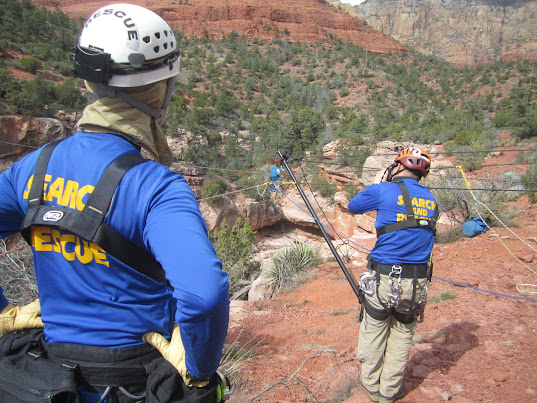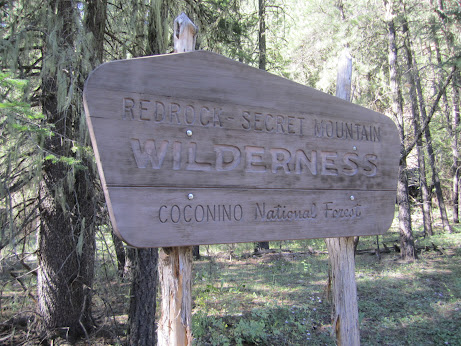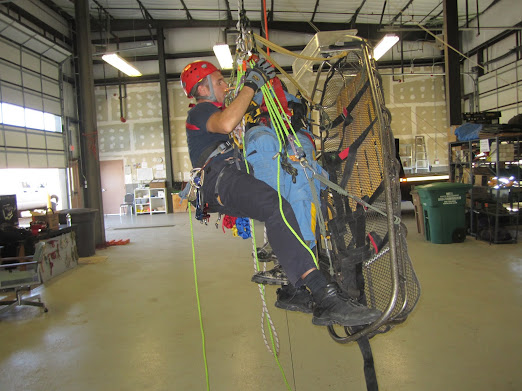This time, we were at the Vertical Relief Climbing Gym here in Flagstaff, getting some special instruction from two of their experts, happy to be training indoors on that cold, rainy Sunday morning. This was training specifically to help us with buttom-up rescues, when we can't access the rescue-ee(s) from above, which is the norm for our team. But we do come across situations, as recently happened on a rescue down in Sedona (see link to news article below), where some climbing comes into play when there's no way to rig rope systems from the top.
A number of our tech team members are already good climbers, and I believe at least a couple of them would be considered expert level themselves. Others are very competent. But there are some, especially me, who are new to this bottom-up stuff, so this was very valuable training and not the last we'll do.
We were given an excellent intro to top-rope and lead-climbing techniques, as well oh-so-important belaying skills, which are different, of course, from the bottom than they are when belaying someone on rappel or who's ascending or being raised from above.
Needless to say, I'm much more comfortable belaying than being belayed while climbing. Sure, I still have my share of nerves when I go over the edge from the top (always will, I think), but climbing up is another story. Instead of being able to put my weight on the rope and trusting the system when working from the top, climbing makes me feel like I'm always on the verge of falling, even though I know someone's "got me" and that things have been safety-checked.
Someone recommended I need to actually fall a few times... onto the belay, of course... to get over that feeling. Probably true.
Anyway, this is what I posted on Facebook yesterday about that experience at the climbing gym:
I was not good at it. I was scared, and I tossed what pride I have out the window. But every time I learned something new (different ways to use the handholds, how to shift my weight, etc.)... and every time I got higher up the wall... and when I made it down-climbing all the way back despite my shaking muscles (from nerves and the fact that I don't use some of those muscles very often), I felt just a tiny bit more confidence creep in. Part of me really wants to learn how to climb—mostly at the gym—just to get better at something that is so NOT a natural talent for me, that challenges me both mentally and physically, and something that makes me face my fear but in a safe way. I think I'll put that on my to-do/wish list.
So, I think I'll start saving my extra pennies and eventually take some lessons. In the meantime, I'm actually looking forward (in a nervous, insecure kinda way) to more of these bottom-up trainings with the team.
Recent Local Search & Rescue Missions and SAR Members in the News
Rescue Crews Save Freezing Homeless Man
Massive Effort Rescues Man from Bottom of Meteor Crater (January 10 -- A major, multi-agency rescue involving in frigid, windy conditions and a difficult confined space extraction)
Stranded Hikers Rescued Near Sedona (This is that bottom-up rescue I was referring to. I was not able to respond to this tech team call-out.)
A Day in the Life: Getting Paid to Hike (A story about one of our SAR teammates, who's also a backcountry guide in Grand Canyon)



















































